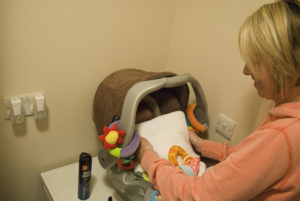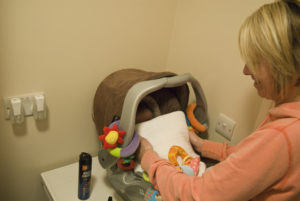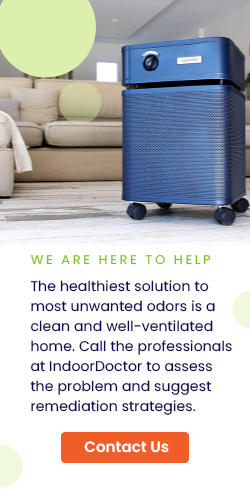During the 1990s, the air freshener market experienced a massive resurgence thanks to the introduction of convenient “plug-in” air fresheners. These air fresheners rely on heat induction technology and special heat-activated scented gels to continually release a scent.

At the time of their introduction, plug-in air fresheners were heralded as being an excellent development in home scenting technology. Not only were they easy to use and affordable, they also didn’t rely on aerosol sprays. Aerosol sprays had come under fire during the 1980s for their deleterious effect on the ozone layer. Today, however, consumers are being warned that they should rethink modern air fresheners. As researchers have taken a closer look at these seemingly hassle-free devices, they have discovered an astonishing number of toxic compounds are present in many scented gels.
The Health Hazards of Plug-In Air Fresheners Exposed
One of the primary concerns health experts have about plug-in air fresheners is their wide-spread use of phthalates. According to a study conducted by the Natural Resources Defence Council (NRDC), 86% of air fresheners tested contained phthalates. Phthalates, which are also found in many plastics, aerosol sprays, paints, pesticides, cosmetics, and fragrances, are notoriously disruptive to the body. As the NRDC reported in their research, “Most phthalates are well known to interfere with production of the male hormone testosterone and have been associated with reproductive abnormalities”. Phthalates are on the State of California’s list of toxic substances “known to cause birth defects or reproductive harm”. The NRDC also warns that airborne phthalates can cause allergic symptoms and asthma. Even trace amounts of phthalates can accumulate to cause these harmful side-effects.
Due to the above findings (and similar corroborative studies), the Consumer Product Safety Commission has issued a general warning about the high phthalate levels present in air fresheners. You should also keep in mind that many additional potential risks of phthalates. All though liver and kidney toxicity and cancer, are still being explored. Preliminary animal studies suggest that these adverse effects are also a genuine, and worrying, possibility in humans.
Even if phthalates are found not to be highly carcinogenic in humans, however, the UK’s Public Health Centre for Radiation, Chemical and Environmental Hazards has revealed that air fresheners typically contain another toxic compound that absolutely is Formaldehyde. Formaldehyde is a well-known human carcinogen that has been definitively linked to cancers of the nose and throat. It is also known to cause ongoing irritation of the throat and airways, potentially leading to dangerous infections, frequent nosebleeds, asthma, and other respiratory ailments, says the US government’s National Toxicology Program. These risks are particularly elevated in the elderly, infants, and people with compromised immune systems. In fact, a 2013 study of more than 2,000 pregnant women (reported in the International Journal of Public Health) found that women who used plug-in air fresheners during gestation were statistically far more likely to have babies that suffered from serious lung infections.
Compounding the risks posed by formaldehyde, most major brands of plug-in air fresheners contain a chemical known as naphthalene. Naphthalene has been shown to cause tissue damage and cancer in the lungs of rodents in laboratory studies. It’s plausible to assume that it causes similar effects in humans.
As if all of the above evidence was not damning enough, plug-in air fresheners have been revealed to contain volatile organic compounds (VOCs) as well. VOCs are compounds with a low boiling point that form gas or vapor at room temperature. This making them an excellent scent dispersal agent. Unfortunately, they too have been linked to an increased risk of asthma, particularly in children.
Formaldehyde
Formaldehyde is a human carcinogen that has a definite link to cancers of the nose and throat. It can also cause ongoing irritation of the throat and airways, potentially leading to dangerous infections, frequent nosebleeds, asthma, and other respiratory ailments, says the US government’s National Toxicology Program. These risks are particularly higher in the elderly, infants, and people with compromised immune systems. In fact, a 2013 study of more than 2,000 pregnant women (reported in the International Journal of Public Health) found that women who used plug-in air fresheners during gestation were statistically far more likely to have babies suffering from serious lung infections.
Compounding the risks posed by formaldehyde, most major brands of plug-in air fresheners contain a chemical known as naphthalene. They have shown that Naphthalene can cause tissue damage and cancer in the lungs of rodents in laboratory studies. It’s plausible to assume that it causes similar effects in humans.
As if all of the above evidence was not damning enough, they have revealed that plug-in air fresheners contain volatile organic compounds (VOCs) as well. VOCs are compounds with a low boiling point that form gas or vapor at room temperature. This making them an excellent scent dispersal agent. Unfortunately, they too have a connection to an increased risk of asthma, particularly in children.
Related Formaldehyde Articles by Indoor Doctor:
-
Formaldehyde: The Toxic Secret Hiding in Your Wrinkle-Free Shirts
-
High Formaldehyde Basement Floor Joists
-
Do You Have Laminate Flooring Concerns? We Test Formaldehyde.
Exploring Air Freshener Alternatives
For those who have pets (or other sources of household odor), the use of air fresheners may feel essential—but this doesn’t mean that you have to purchase the toxic varieties sold at the store. Natural essential oils, for example, can be used to make safe home scenting products, such as “DIY” scented candles. Try out making safe scented candles by watching this simple tutorial on YouTube.
Finally, remember that the best—and healthiest—solution to most unwanted odors is simply to have a clean and well-ventilated home. If your home suffers from musty odors, it’s probable that you have a hidden mold infestation in your ventilation system. Rather than masking the symptoms, call in a professional home air inspector to assess the problem and suggest remediation strategies.






